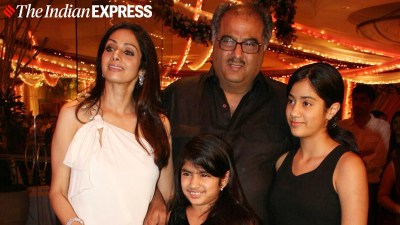SC refuses to commute Rajoana death penalty: The long legal battle of Beant Singh assassination convict
In 2009, Rajoana had written to the Punjab and Haryana HC Chief Justice terming his death sentence 'justice' and a 'blessing'. How did his case then reach the SC?
 The Punjab Police arrested Rajoana on December 22, 1995. (File)
The Punjab Police arrested Rajoana on December 22, 1995. (File) The Supreme Court Wednesday rejected a plea for commutation of Balwant Singh Rajoana’s death sentence to life imprisonment. Rajoana was convicted for his involvement in the 1995 assassination of former Punjab Chief Minister Beant Singh.
A Bench of Justices BR Gavai, Vikram Nath, and Sanjay Karol said that the Ministry of Home Affairs’ call to defer its decision on Rajoana’s mercy petition “actually amounts to a decision declining to grant the same for the present.” Additionally, the Court directed that a competent authority deal with the mercy petition as and when they deem it necessary.
Who is Balwant Singh Rajoana?
A resident of Rajoana Kalan village in Ludhiana district, Balwant Singh Rajoana was formerly a constable with the Punjab Police in 1987. However, in the 1990s, when Punjab was rife with Sikh militancy, Rajoana joined the Khalistani outfit Babbar Khalsa International.
On August 31, 1995, an explosion occurred outside the Punjab civil secretariat, killing the then Chief Minister Beant Singh along with 16 others. While the suicide bomb attack was carried out by Dilawar Singh, it was Rajoana who tied the bombs to Singh’s body and was the backup option in case Singh failed.
The Punjab Police arrested Rajoana on December 22, 1995. Besides him, eight other co-accused in the assassination case, including Jagtar Singh Hawara and Gurmit Singh, were also put on trial.
In his judicial confession recorded under Section 313 of the CrPC between January 22-23, 1996, Rajoana admitted to the assassination and stated: “Judge Sahib, Beant Singh assumed himself [to be the] angel of peace after killing thousand innocent people, compared himself with Guru Gobind Singh Ji and Ram Ji, thereafter we had decided to kill Chief Minister Sh Beant Singh.” During the trial, Rajoana refused to engage a lawyer and admitted to his involvement in the murder, stating, “I have no repentance of involvement in this murder. I and Bhai Dilawar Singh prepared this bomb.”
Following this, a special CBI court in Chandigarh awarded him the death penalty on July 27, 2007, after convicting him of offences such as criminal conspiracy, murder, and attempt to murder along with other offenses under the Explosives Substances Act, 1908. The court also convicted and awarded the death penalty to co-accused Jagtar Singh Hawara, and life imprisonment to co-accused Gurmit Singh, Lakhwinder Singh, and Shamsher Singh. While Hawara’s death sentence was commuted to life imprisonment by the Punjab and Haryana High Court in 2010, after he challenged the trial court order, Rajoana’s was not. This was because Rajoana did not challenge the court’s decision to award him the death penalty.
However, two years after being sentenced to death, Rajoana approached the Punjab and Haryana High Court Chief Justice for his case to be considered separately from that of his co-accused.
What was Rajoana’s request?
On August 10, 2009, Rajoana asked Punjab and Haryana High Court Chief Justice for his case to be considered separately from that of his co-accused, as they had challenged their conviction. Rajoana deemed the death sentence for his act as “justice” and a “blessing”, while adding that he refused to bow before a “worthless system”. In hisletter addressed to the Chief Justice, Rajoana stated, “How can I say that I am innocent and why should I engage any advocate when my conscience does not allow me to do so.”
Subsequently, on December 10, 2010, the Punjab and Haryana High Court, on a death reference, confirmed Rajoana’s conviction and sentence.
If Rajoana never filed an appeal, how did the HC confirm his sentence?
Sections 366 to 371 of the CrPC illustrate the statutory guidelines that are to be mandatorily followed before executing a death sentence awarded by a Sessions Court. In its 2016 ruling in “Union of India vs. Sriharan”, the top court observed that Sections 366-371 of the CrPC are in place for the relevant considerations that must be made when a trial court imposes the death penalty. Section 366 also says that whenever a Sessions Court passes a death sentence, the proceedings have to be mandatorily submitted to the High Court. Essentially, a death sentence given by a trial court must be confirmed by the High Court.
On a related note, Rajoana’s co-accused, Jagtar Singh Hawara, along with the other co-accused(s), filed an appeal against the trial court’s decision. Finding substance in Hawara’s appeal, the Punjab and Haryana High Court in 2010 substituted his death sentence for life imprisonment while simultaneously affirming the death sentence given to Rajoana.
While Rajoana was originally scheduled to be hanged on March 31, 2012, resentment and anger among some sections of society led the then Punjab government, headed by Akali patriarch Parkash Singh Badal, to intensify efforts toward pacification. On March 28, 2012, the Shiromani Gurdwara Parbandhak Committee (SGPC) filed a mercy petition before the President, following which the Union Home Ministry sought a stay on his execution.
What did the Centre’s letter to the Punjab government say?
On September 27, 2019, the MHA wrote to the Chief Secretary of the Punjab government, proposing the commutation of Rajoana’s death sentence into life imprisonment to commemorate the 550th birth anniversary of Guru Nanak Dev, but the proposal was never implemented.
Besides this, the mercy petition filed on his behalf by the SGPC remained pending before the President.
Finally, in September 2020, Rajoana moved the SC, seeking his mercy petition, pending for 10 years, to be taken up immediately for disposal and for MHA’s 2019 proposal to be implemented.
What happened before the Supreme Court?
On May 2, 2022, the Supreme Court heard Rajoana’s plea and asked the Centre to decide it within two months. When no decision was taken, the court again asked the Centre on September 28, 2022, to decide the matter. In its affidavit seeking dismissal of the mercy petition, the Centre stated that it had decided to defer taking any decision on the mercy plea “as it could have serious potential of compromising the security of the nation or creating a law and order situation”.
During the proceedings before the Supreme Court, then ASG KM Natraj submitted that while the appeals of the co-accused in the present case were still pending before the Apex Court, any consideration of Rajoana’s mercy petition would arise only after the disposal of those appeals, as per the law laid down by the SC in its 1982 decision in “Harbans Singh vs. the State of UP.”
Further, it was contended that since the petitioner had not filed any mercy petition himself, the relief could not be granted, as per the law laid down in Guwahati High Court’s 2011 ruling in “Kusumbala Tarun Das v Union of India”.
On March 2, the Supreme Court reserved its judgment. However, on May 3, the court delivered a judgment concurring with the MHA’s decision to defer the outcome of Rajoana’s mercy petition in light of its possible impact on compromising the security of the nation or creating a law and order situation. Adding that it was within the executive’s domain to take a call on “such sensitive issues,” the court disposed of the plea while directing “the competent authority” to deal with it “in due course of time” and when “deemed necessary”.
Has the court ever commuted a convict’s death penalty?
On January 21, 2014, the Supreme Court commuted the death penalty of AG Perarivalan and two other convicts in the Rajiv Gandhi assassination case to life imprisonment, on grounds of inordinate delay in deciding their mercy petitions. Subsequently, on May 18, 2022, the top court ordered Perarivalan’s release.
Similarly, in May 2008, following the conviction of Swami Shraddhanand, aka Murali Manohar Mishra, for drugging and murdering his wife Shakereh Khaleeli, the Supreme Court delivered a split verdict on its decision to confirm his death penalty, which was given unanimously by both the trial court and the Karnataka High Court. This led to the top court’s decision to refer the matter to a three-judge Bench, which later commuted Shraddhanand’s sentence to life imprisonment while directing that “he shall not be released from prison till the rest of his life”.
The Shraddhanand verdict allowed many death-row convicts to escape the death penalty in several cases that flowed in its aftermath, such as the top court’s 2009 rulings in “Haru Ghosh vs. State of West Bengal” and “Sebastian @ Chevithiyan vs. State of Kerala,” commuting their death penalty to life imprisonment or to a certain number of years. Both cases referred to the Shraddhanand verdict.
- 01
- 02
- 03
- 04
- 05






































